
Rolling Mountains, generally known as parts of Hengduan Mountains, stretch over the western side of Sichuan Province in southwest China, creating breathtaking views that only the bravest can see. On the lifeless cold alpine scree slopes, some plants have evolved amazing mechanisms to endure the bitter cold at high altitudes, bringing vitality to the plateau.
A natural greenhouse
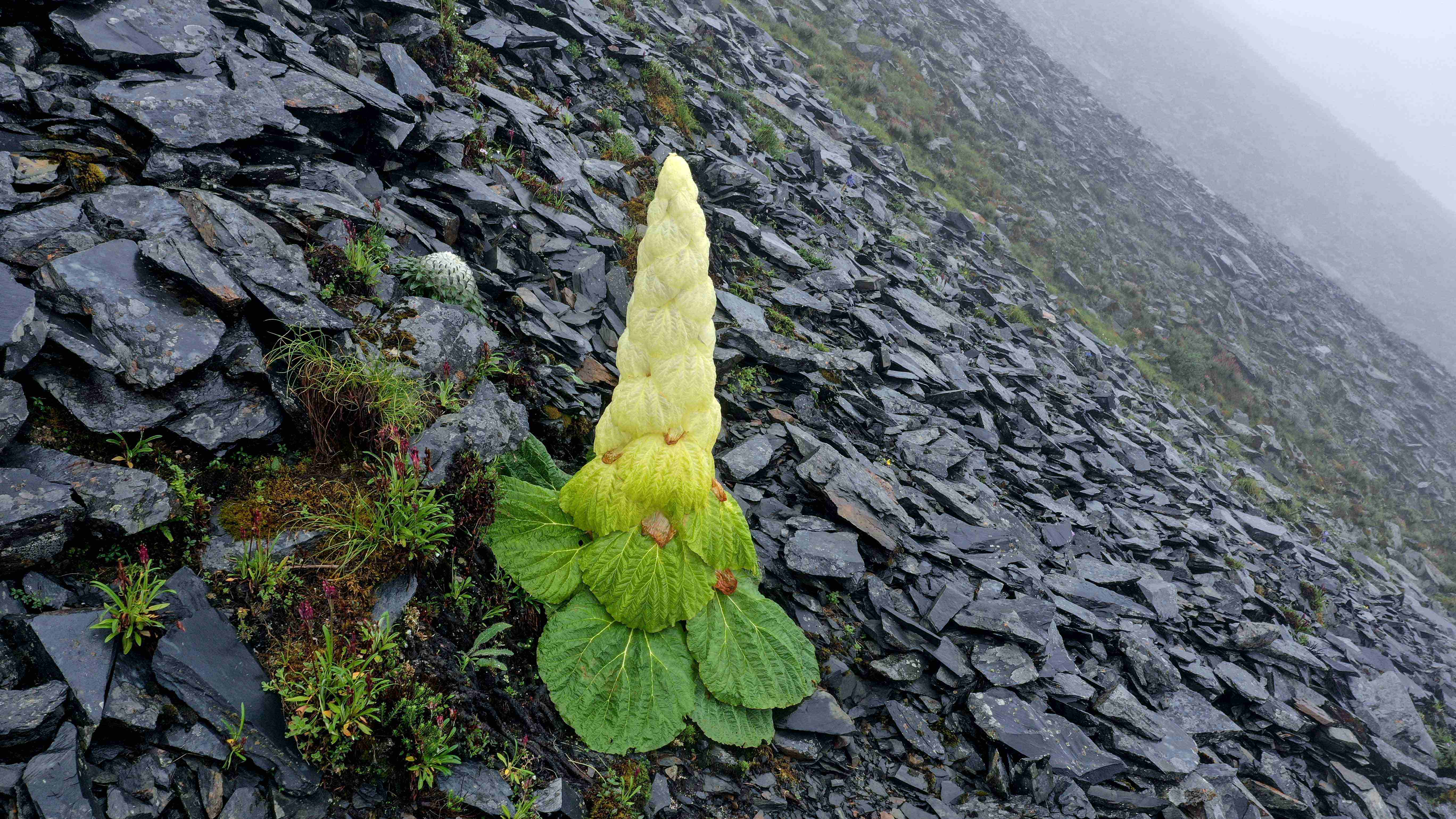
Rheum nobile in alpine scree slopes in Shangri-La in southwest China's Yunnan Province. /Credit to CGTN Nature film crew
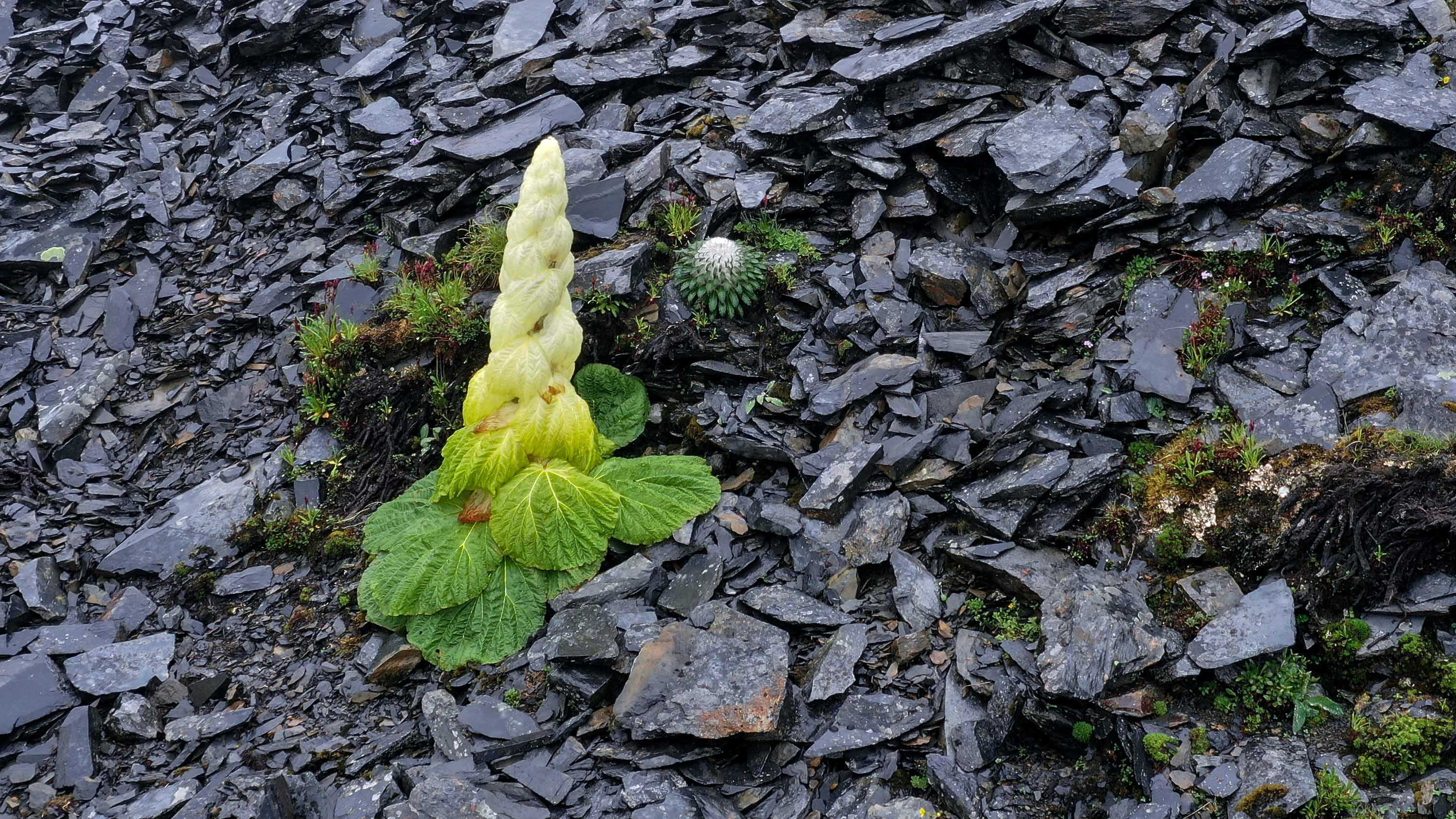
Rheum nobile in alpine scree slopes in Shangri-La in southwest China's Yunnan Province. /Credit to CGTN Nature film crew
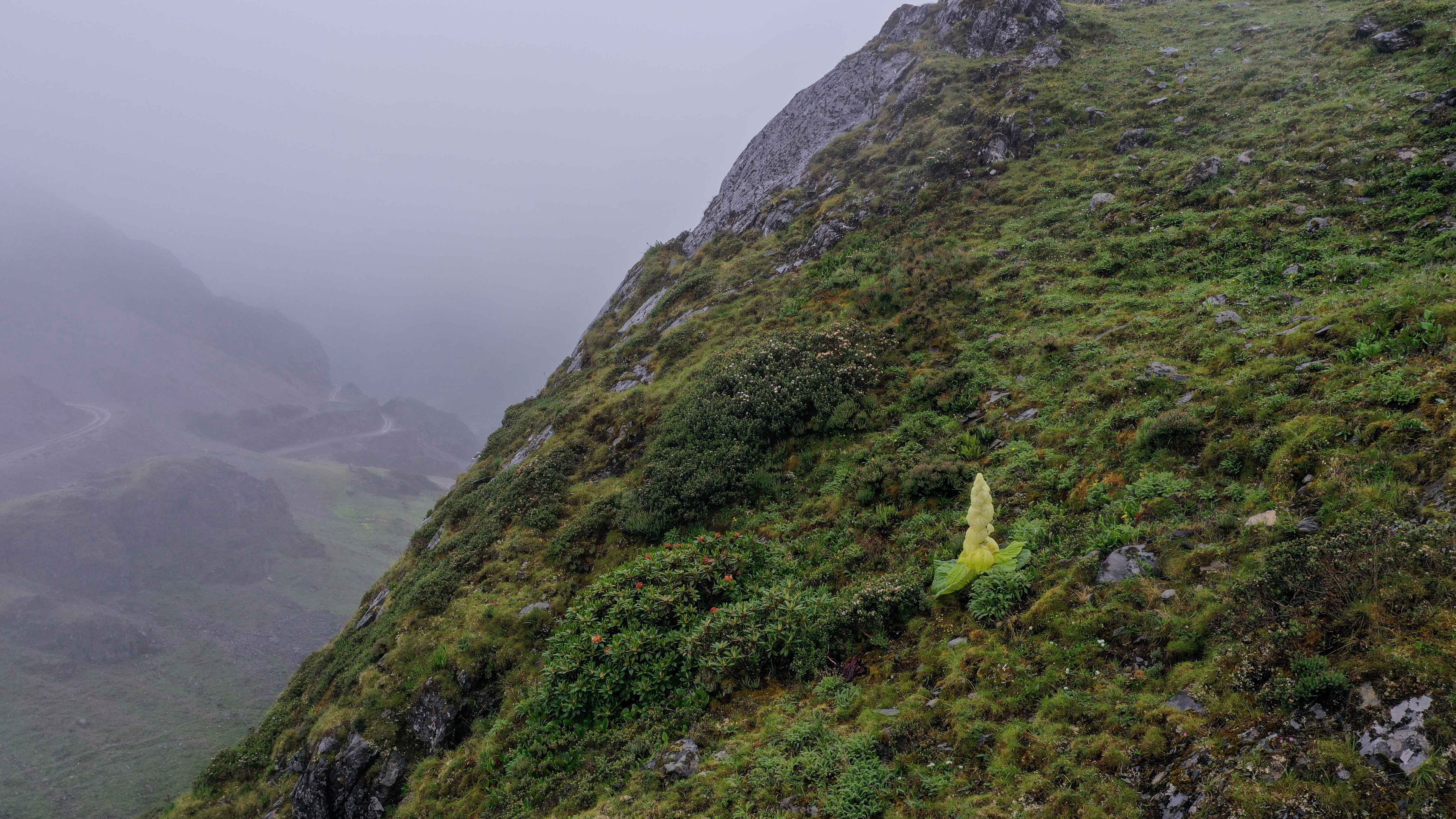
Rheum nobile in alpine scree slopes in Shangri-La in southwest China's Yunnan Province. /Credit to CGTN Nature film crew
Just like people who love to stay indoors with heating during the winter, the noble rhubarb (Rheum nobile) stays in its special greenhouse. The half-transparent yellow bracts closely wrap up the flowering organism and conserve heat like a greenhouse. At noon, the temperature inside the natural greenhouse can increase up to 10 degrees Celsius, which accelerates its propagation process.
Apart from preserving heat, the yellow greenhouse can absorb and reflect ultraviolet radiation. Only 10 percent of the ultraviolet rays can reach the flowering organism inside. The reflected ultraviolet rays make the noble rhubarb noticeable in alpine screes, especially for pollinators like insects.
The woolly coat
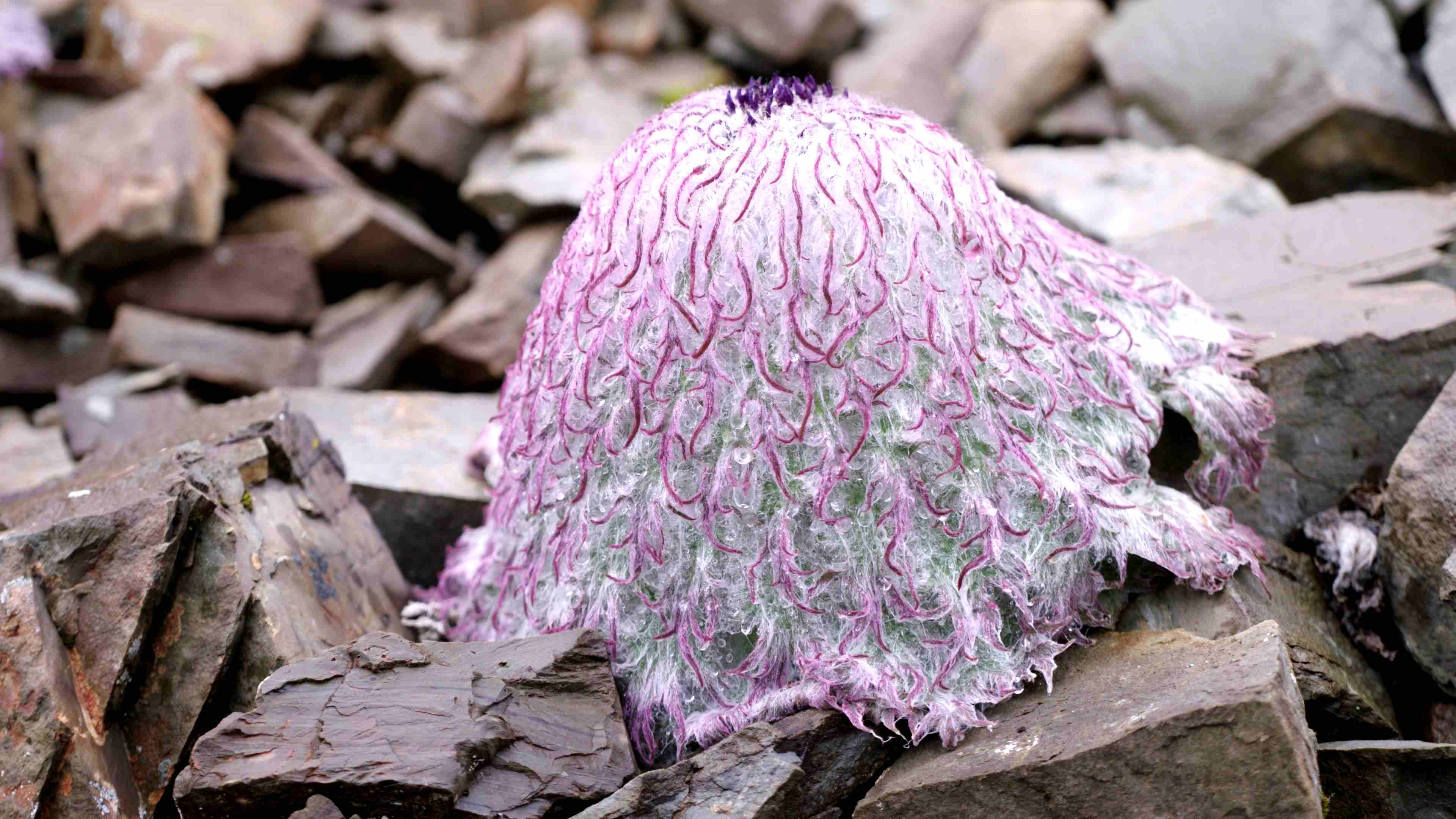
Saussurea medusa in alpine scree slopes in Shangri-La in southwest China's Yunnan Province. /Credit to CGTN Nature film crew
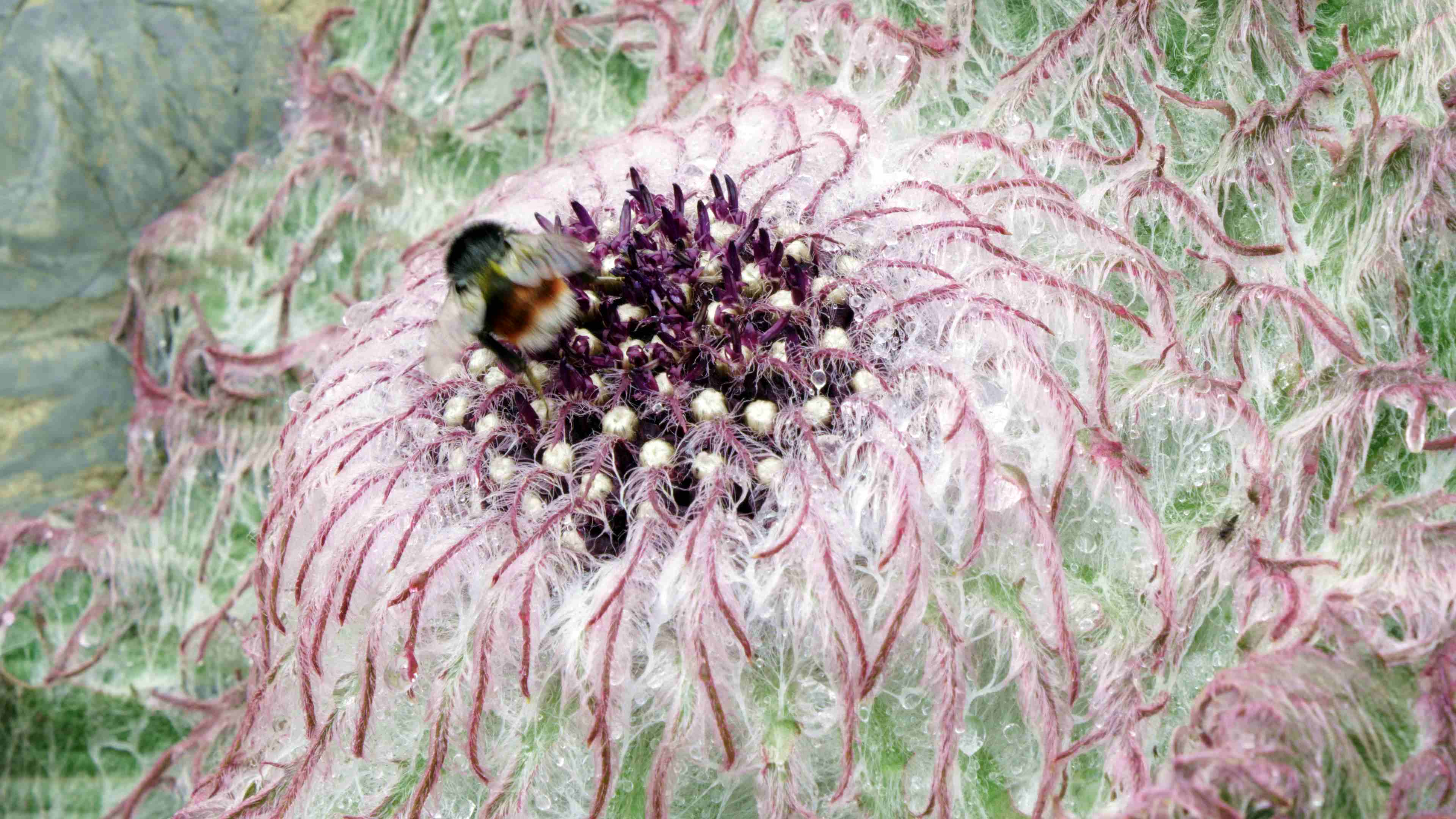
Saussurea medusa in alpine scree slopes in Shangri-La in southwest China's Yunnan Province. /Credit to CGTN Nature film crew
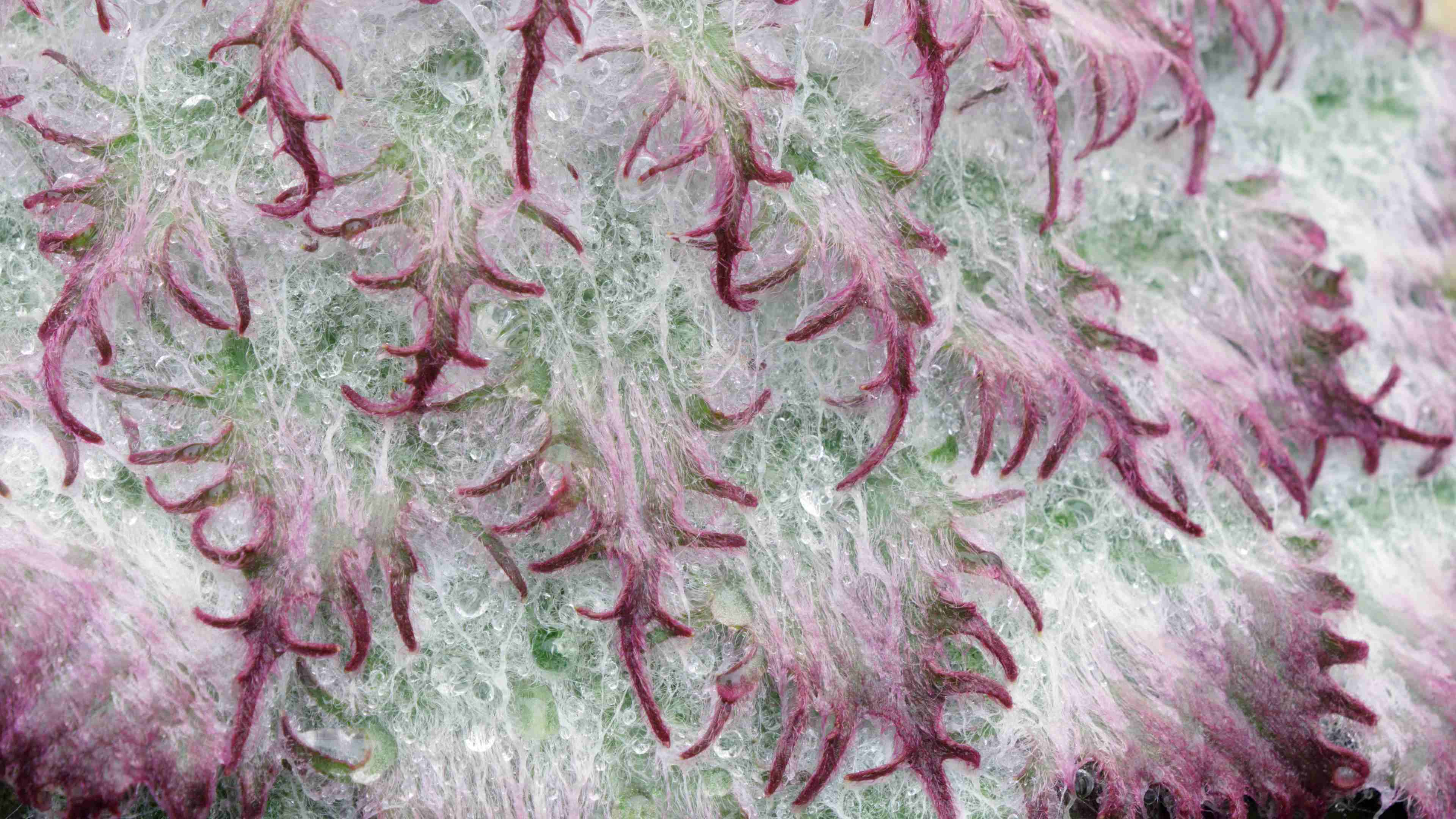
Saussurea medusa in alpine scree slopes in Shangri-La in southwest China's Yunnan Province. /Credit to CGTN Nature film crew
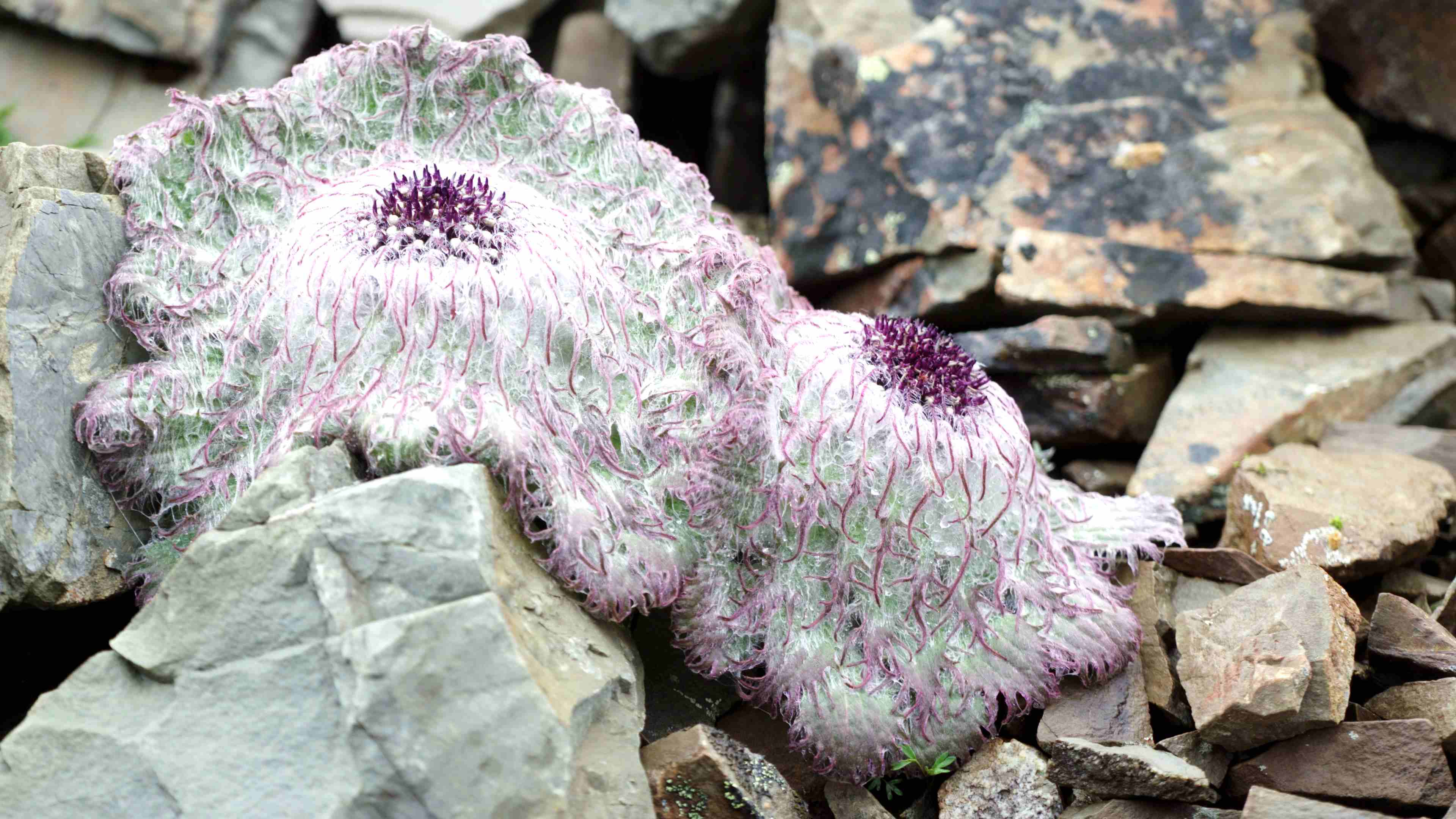
Saussurea medusa in alpine scree slopes in Shangri-La in southwest China's Yunnan Province. /Credit to CGTN Nature film crew
In northern China, people wear layers of thick coat to get through the frigid winter. For saussurea medusa, the white woolly coat it wears is its secret weapon against coldness. Typically found on rocky slopes at the altitude between 3,000 and 5,600 meters, this jellyfish-like plant has developed thick hair around the leaves and flowers to protect itself during the frost period that can last eight to 10 months.
Besides, the fluffy hair like rabbit fur can decrease ultraviolet radiation and water evaporation. When it is rainy, the tailored coat can prevent the rainwater from washing away the precious pollen, ensuring flowering.
A flat cushion
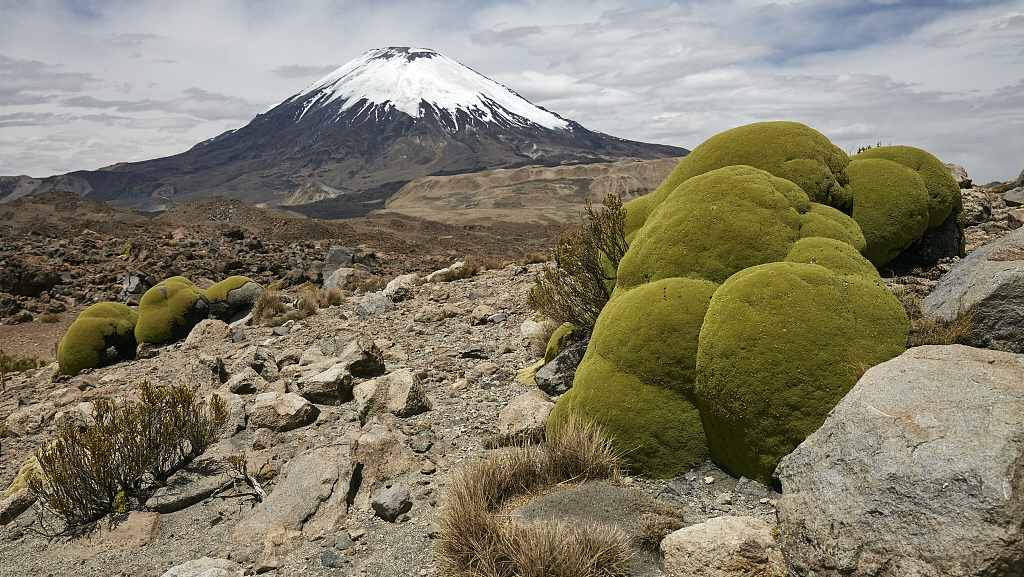
Yareta or Llareta plant in front of Parinacota volcano in South America. /VCG Photo
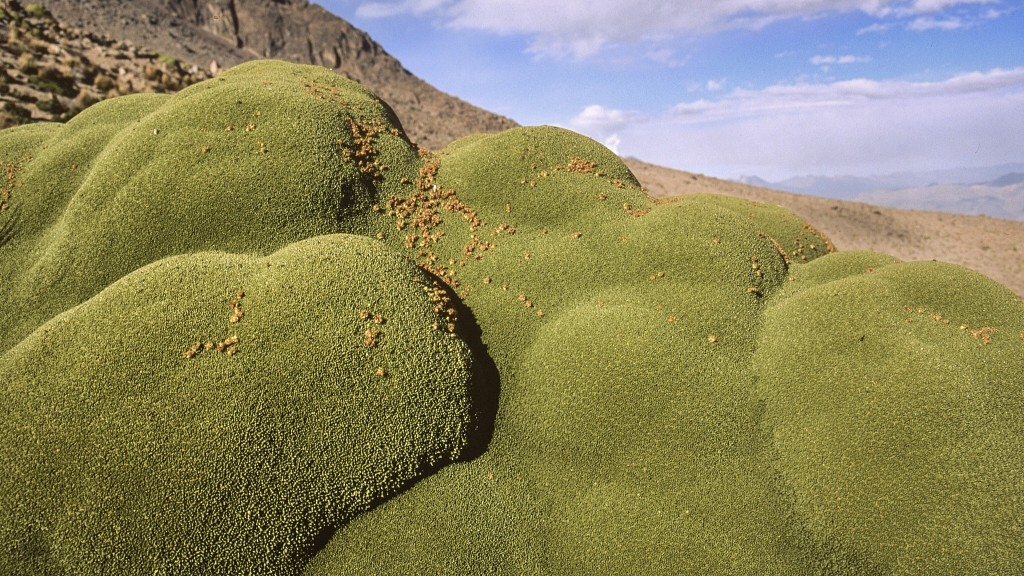
Close-up of a yareta in Chachani volcano in Peru. /VCG Photo
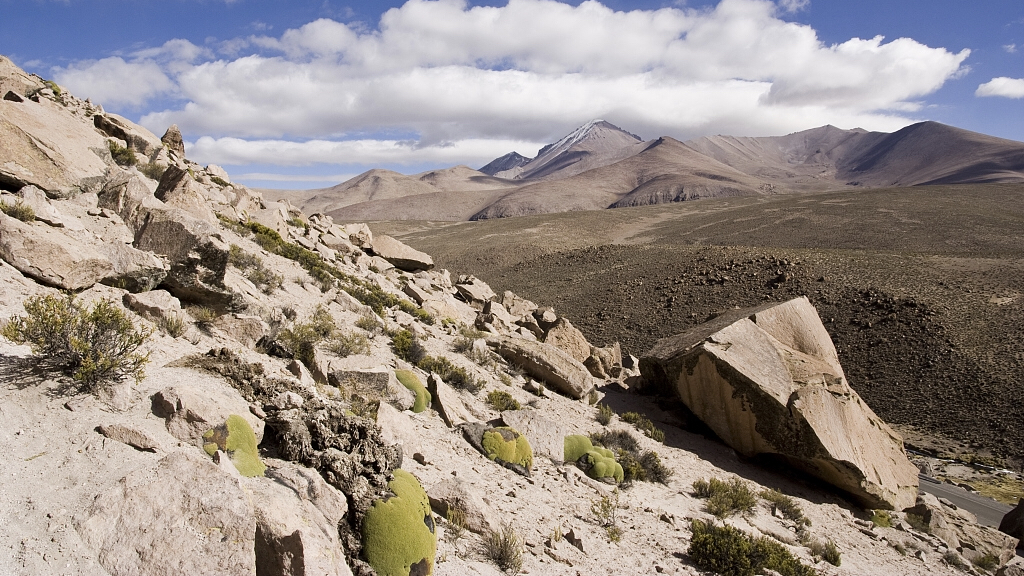
Mountain landscape in Lauca National Park in Chile. /VCG Photo
Different from Rheum nobile and saussurea medusa, the cushion plant survives on the plateau by growing shorter and crawling on the ground where the temperature is higher than the surrounding air. To reduce heat and water loss, the cushion plant's leaves will grow into an extremely compact and dense green mat, as if to huddle for warmth.
Normally, the cushion plant can live for many years. Many yaretas growing in South America are said to be over 3,000 years old.
Despite the harsh environment on the plateau, the plants have shown a marvelous capacity to adapt and to survive. The pace of evolution continues and more of nature's wisdom is waiting to be learned by humans.
China's Flora Tour
From the wetlands along the coast to dense rainforests hidden in the southwest of China, all boast a wide variety of plant species. In this series, we will go on a tour to learn about some of the most representative flora in different provinces and how they live in harmony with the local geography and climate.
Read More:
China's Flora Tour: Guangdong-The fire red that signals early spring
China's Flora Tour: Guangxi-The panda of plants - goldflower tea
China's Flora Tour: Hainan-The precious living fossil in Hainan's rainforest
China's Flora Tour: Hainan-The hanging bird's-nest fern
China's Flora Tour: Chongqing-A peek at the botanic world of Chongqing
China's Flora Tour: Yunnan-A purple medusa living on the rocky mountain slopes
(Cover image designed by CGTN's Li Yueyun.)
(If you want to contribute and have specific expertise, please contact us at nature@cgtn.com)

Copyright © 2018 CGTN. Beijing ICP prepared NO.16065310-3
Copyright © 2018 CGTN. Beijing ICP prepared NO.16065310-3